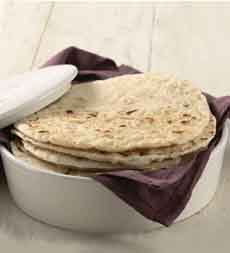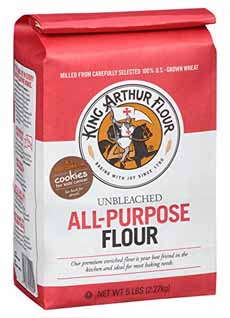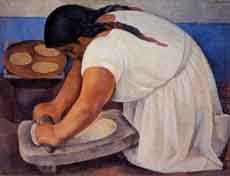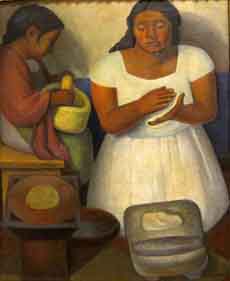Homemade Tortillas Recipe & The History Of Tortillas
|
Want to make homemade tortillas for Cinco de Mayo? Practice this weekend with this recipe from King Arthur Flour. They’re so much more authentic than the flat-pressed commercial versions. Although traditionally made with lard, these tortillas are equally delicious using butter, shortening, or vegetable oil as the fat. This is also a flour tortilla version. The originals were made with corn flour until wheat flour arrived with the Spanish in the 16th century. If you prefer a corn flour version, here’s a recipe and video from Mexican food specialist chef Rick Bayless, plus more about corn tortilla. The resting period improves the texture of the dough by giving the flour time to absorb the water. It also gives the gluten time to relax, making the tortillas easier to roll out. You may extend the resting, or skip it altogether if you don’t have the time—the recipe is pretty forgiving. The tortillas will roll out and stay thinner if you include the rest, though. If there are leftovers, allow them to cool completely, then wrap them tightly in plastic and store them in the refrigerator. Reheat in an ungreased skillet, or for a few seconds in the microwave. Prep time is 15 minutes, and cook time is 15 to 25 minutes. > June 16th is National Tortilla Day. Ingredients For 8 Eight-Inch Tortillas 1. MAKE the dough: In a medium-sized bowl, whisk together the flour, baking powder, and salt. Add the lard (or butter, or shortening; if you’re using vegetable oil, add it in step 3). Use your fingers or a pastry blender to work the fat into the flour until it disappears. Coating most of the flour with fat inhibits gluten formation, making the tortillas easier to roll out. 2. POUR in the lesser amount of hot water (plus the oil, if you’re using it), and stir briskly with a fork or whisk to bring the dough together into a shaggy mass. Stir in additional water as needed to bring the dough together. 3. TURN the dough out onto a lightly floured counter and knead briefly, just until the dough forms a ball. If the dough is very sticky, gradually add a bit more flour. 4. DIVIDE the dough into 8 pieces. Round the pieces into balls, flatten slightly, and allow them to rest, covered, for about 30 minutes. If you wish, coat each ball lightly in oil before covering it to ensure that the dough doesn’t dry out. While the dough rests… 5. PREHEAT an ungreased cast iron griddle or skillet over medium-high heat, about 400°F. Working with one piece of dough at a time, roll into a round about 8″ in diameter. Keep the remaining dough covered while you work. Fry the tortilla in the ungreased pan for about 30 seconds on each side. 6. WRAP the tortillas in a clean cloth when they come off the griddle, to keep them pliable. Repeat with the remaining dough balls. The mainstay of the Mexican diet was and still is, the corn* tortilla, made with indigenous corn from prehistoric times. Excavations in the valley of Valle de Tehuac, in Sierra Mountains in the state of Puebla, date their use to more than seven thousand years [source]. |

|
|
|
The corn used was a very small wild cob (that was bred, by 3000 B.C.E., into the large ears we know today), ground corn foods, along with roots and fruits plus hunting, comprised the diet. The cooking process is little changed today. Corn kernels are cooked with lime to remove the husk (known as nixtamalization), then ground on a stone slab with a grinding stone (photo #3). The dough is formed into small round balls that make the individual tortillas, and patted out by hand into thin round cakes (photo #4), and cooked over a fire (today, homemade versions use a skillet on a stove top). For tamales, the cake is placed in an unbaked tortilla, filled, and wrapped in a corn husk for cooking. When Hernan Cortez and his conquistadors arrived in the New World in 1519, they discovered that flat cornbreads were a staple Aztec food. In the Aztec’s Nahuatl language, the word for them was tlaxcalli (pronounced tih-lax-CAH-leee. The Spanish gave them the name tortilla. Technology arrived centuries later, in the 1940s when the use of small gas engines and electric motors became widespread to power grinders for making masa (the ground corn). A hand press became used to form the masa into tortillas. *Wheat flour only arrived in the 16th century, with the Conquistadors, and became popular in Mexican/U.S. border cooking. By the time Spaniards reached the shores of what is now Mexico in the 1400s, indigenous Mesoamericans had a sophisticated and flavorful cuisine based on native fruits, game, cultivated beans and corn, and domesticated turkeys.
|
||


